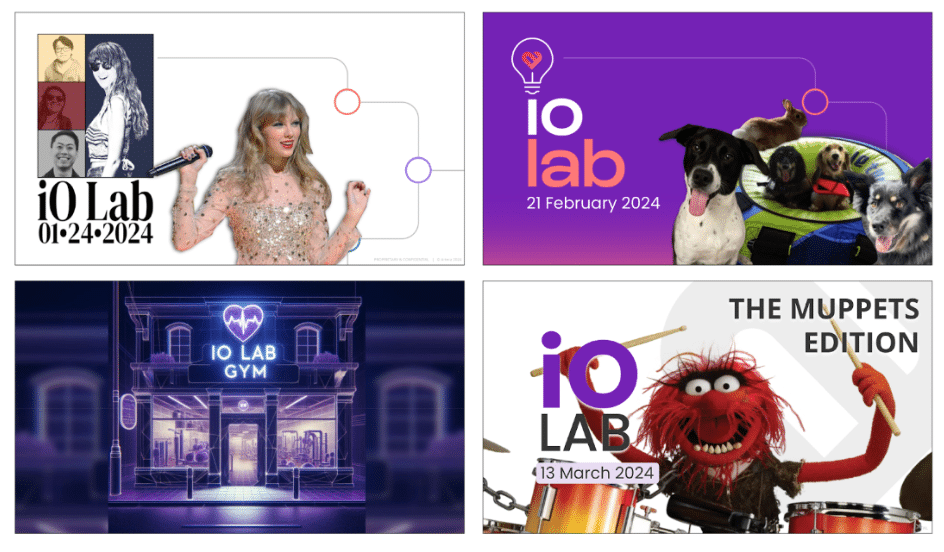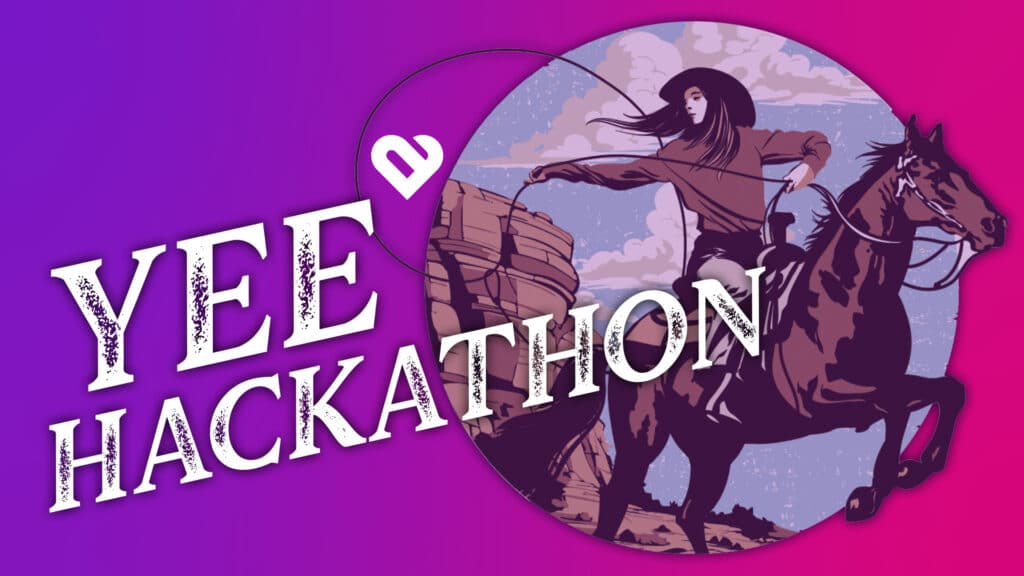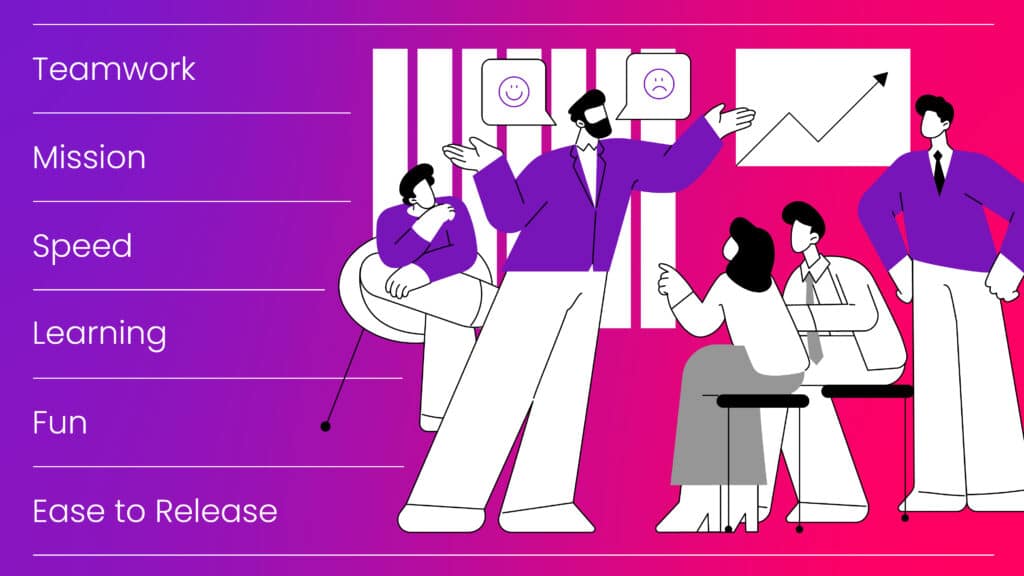
Every month, we hold “iO Lab”, a meeting open to all Artera employees, during which our Innovation Org (“iO”, or “R&D” more familiarly) teams demo their upcoming and recently released features. The openness of this meeting comes with both benefits and disadvantages. It’s useful in that it communicates product changes to many people across various departments at once, but the large and diverse audience of the meeting makes it difficult to curate demos that engage and offer value to all attendees.
iO Lab demos were initially structured as “here’s the feature, and here’s how it works.” While feature walkthroughs are useful for some attendees, they don’t meet the needs of those who gain more from understanding the process behind building the feature.
A demo of a feature can be much more than a simple overview of how something works. One feature has many different stories to tell depending on the audience. If I work in a customer service role, I may want to know how this feature works and what problems it solves, so I’m able to offer it as a solution for my clients. However, if I work in an engineering role, I may want to understand technical decisions and tradeoffs that were made for this feature and their impact on delivery timeline and scalability, so that I can factor that into decisions I’m faced with later.
As we recognized an opportunity to restructure our demos to better serve our diverse audience needs, our first question became:
- How can presenters create demos that appeal to the variety of goals and motivations of the attendees?
While reflecting on audience needs, we also considered our overarching department goal of increasing employee engagement. The Innovation Org is primarily a distributed team, so the vast majority of our interactions are virtual, including our iO Lab meetings. Most people in our department haven’t met in person, and it requires a bit of effort and creativity to build relationships in a virtual setting.
We took this opportunity to consider how we could restructure this meeting to help us connect more with each other. Our second question became:
- How can we use this meeting to help our Innovation Org members get to know others in their department better?
Over the past nine months, we’ve addressed these questions. In doing so, we’ve transformed iO Lab from being a meeting with feature demos to a monthly production put on by the Innovation Org. Five key changes led to our success:
- Offering Content Guidelines
- Expanding Content Variety
- Making Agendas Open and Accessible to Everyone
- Rotating Meeting Hosts
- Implementing Themes
Here’s a look into the intentions behind each of these changes and why they ultimately led to higher engagement in this meeting.
Question 1: How can presenters create demos that appeal to the variety of goals and motivations of the attendees?
Offering Content Guidelines
Moving from “The What” to “The What, How, and Why”
Initially, iO Lab presenters were asked to demo walkthroughs of what was built. The guidance did not include focusing on why or how it was built, but these are the aspects of a feature’s story that audiences learn the most from. We tackled this by offering optional presentation guidelines for our speakers that suggested how they might structure their demos from an audience needs perspective.
Depending on their role, some audience members benefit from learning what was built. Others benefit more from understanding how it was built. Everyone benefits from understanding why it was built.
Expanding Content Variety
Moving from exclusively shipped features to any opportunities for learning
We learned that Innovation Org employees assumed that iO Lab was a venue for exclusively demoing shipped features. In some ways, this meeting functioned as a makeshift Release Meeting. However, by focusing on released features only, we also were missing out on a variety of interesting topics people could learn from, such as: experiments we ran, customer insights we gained through research, tools we’ve tested, and more.
Now, we’ve broadened our definition of a “demo”, opening opportunities for anything of value someone has to share with the organization.
Question 2: How can we use this meeting to help our Innovation Org members get to know others in their department better?
Making Agendas Open and Accessible to Everyone
Letting presenters sign themselves up
To expand the types of content we had in this meeting, we needed to give potential presenters a clear path to participating in iO Lab. Historically, iO Lab presenters were asked to present when their manager deemed something was ready to be demoed. Becoming a presenter was a passive process.
To grow and diversify our lineup of presenters, we started posting broad calls for presenters at the end of every iO Lab meeting and in our public department Slack channels. This way, people are empowered to volunteer to participate, opening us to presentations that their managers may not have known about or thought to ask for.
Rotating Meeting Hosts
Having a different iO member host each iO Lab
Originally, this meeting was hosted by a member of the leadership team, but we shifted toward using this meeting as a platform to spotlight individual contributors in the Innovation Org. We welcome anyone who volunteers to host. We also know that not everyone is a hand raiser, so we make sure we ask people directly if they’re willing and/or what support they would need to feel comfortable hosting. We’ve found that many people who aren’t hand raisers will say yes to an opportunity if you ask them directly.
A rotation of hosts is important because while large presentation-style meetings are not the best venue for relationship building, having exposure to people you haven’t met before in a group meeting can open the door to reach out and build those relationships outside of this meeting.
Implementing Themes
Interweaving work with play
One of the most successful changes is one that happened organically: implementing meeting themes. It started simply when we themed October and Novembers’ slide decks to Halloween and Thanksgiving respectively. Then, a miscommunication led to December’s hosts believing their meeting needed to be “Mariah Carey” themed, which opened the door to more creativity and personality in the meetings that followed.
Our Mariah Carey Tribute iO Lab was followed by January’s recreation of the Eras Tour, February’s celebration of the pets of Artera, and March’s Muppet-hosted iO lab. This month, iO Lab will be hitting the gym.
The themes introduce a sense of “play” into our work in a way that engages the audience and better captures their attention. An audience that’s engaged with the presentation is going to retain the information better.
Looking forward
By reimagining this meeting as not only as a platform for feature demos, but a platform of connection, learning, and culture, we’ve already experienced a huge boost in employee engagement. It’s our hope and expectation that this meeting will continue to evolve to meet our team’s needs as we grow and change.




